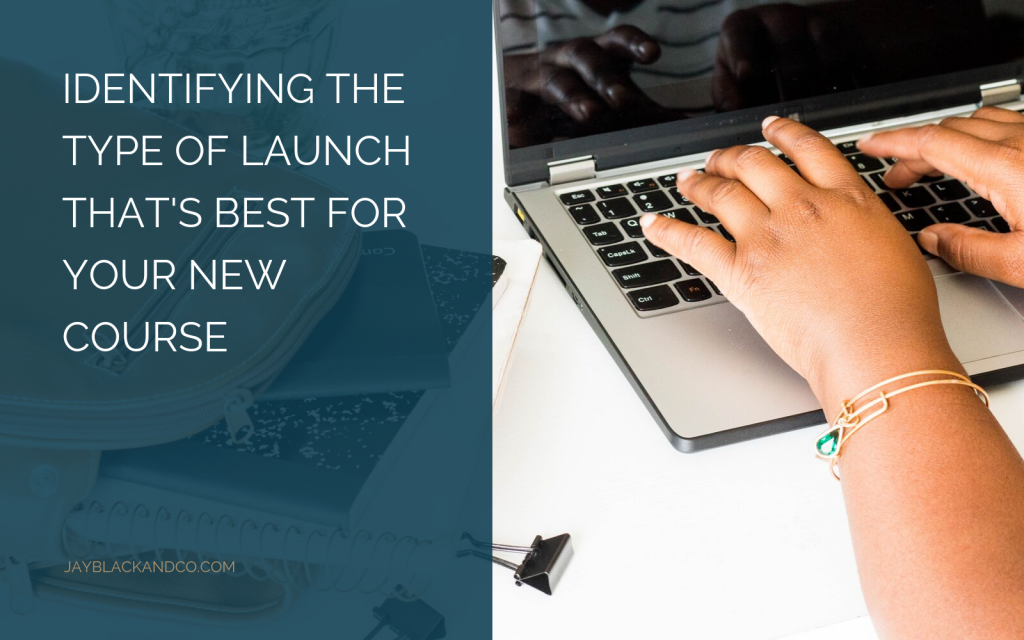As a coach, it is natural that you want to reach out and teach others how to enhance their lives. How to move from point A to point B in a gracefully and effectively. One of the most productive ways to do so is by launching your course.
Launching a course serves many purposes. It enables you to help more clients at one time. It is very cost and time-effective. It helps you to leverage your content, coaching method and adds structure to within your business. Plus, it increases your source authority as a coach.
Generally, when a coach is interested in releasing a course, they have two options in mind. The option a coach may choose depends on the bandwidth of the coach and the business support capacity, the needs of the audience, the subject, topic or methodology being used and taught.
All of these factors must be considered before a coach decides whether they will release a self-paced course or an open/close course.
Let’s take a look into what these courses generally look like and what a launch outline may look like for each. Then, you may have a better idea which may be a better fit for you whenever you launch your next course.
Self-Paced Courses
Self-paced courses are programs usually designed to be evergreen (launched once and always for sell) and allow the students to be self-guided through the modules. Normally, the content is automated and the student will receive instructions via email or prompts through a membership or online teaching site.
As you can probably tell, the course will take some time to set up and make sure that all of the automation is connected. But, once you’ve done it, you can set it and forget it.
Students are able to buy the course whenever they would like. You can promote it whenever you want. After your first marketing push for it, you don’t have to enter into another huge marketing campaign again! Hallelujah!
With it being a self-paced course, there’s little “hands-on” time that’s required from you as a coach, unless you add those bonuses to the package. Like “ask me any questions”, or “open office hours”, “group coaching calls”, etc.
And, since there’s little time with you being involved in these types of courses, they are typically set at a lower price point. So, these make great introductory purchases for prospects who may have seen or heard of your work but are not able to afford or are not ready for your 1:1 coaching services.
I know this all sounds great, right? But, there are some cons to this as well. One major con I’ve seen with self-paced courses is that it decreases the urgency of prospects of working with you. After your first big marketing push, if they know that this course is always going to be around, then why buy now? They’ll catch it later. Then, your audience will continue to procrastinate on buying your course until they forget about this golden nugget altogether.
The Launch
Since a self-paced course is evergreen, the launch for it is usually smaller and shorter. Which means there’s less activity. But, that doesn’t mean that the planning needs to be taken less seriously. So, let’s dive in and see what activities you can do for launch like this.
Being social is your friend. Use this time to connect, connect, connect. Let everyone in your Facebook groups, Twitter chats, LinkedIn connections, and on Insta know that you’re about to release your new course. And, I don’t mean a one and done. I mean truly share tips, value, content, resources that surround this new program. There is a way to do it with finesse and not to be spammy. You don’t have to use your course imagery in each post. But, I do encourage you to talk about the topics that you mention in the course and give a “hey! Did I mention that I’m releasing my new course on the 15th of this month? Click the link in my bio to check it out!” and the end of your post.
Drop a letter in the mail. Okay, snail mail is a little old fashion. But, what about sending an email to those on your list? You can set up a sequence of emails over the course of a month to let your audience know that this course is coming, what’s you’ll be helping your audience with, and the amazing outcomes they can expect to experience by taking the course. I’ve said it once and I’ll say it again. There’s nothing more precious than a person’s email address. If you have it, you should use it but not abuse it. So, send them information to let them know who you are investing in your business and in them by creating a course.
Live from your office, it’s YOU! Whether you decide to do a full-on webinar or go live on Instagram/Facebook/LinkedIn, that’s totally up to you. But, there’s something to be said for an audience being able to see the passion of a coach about the topic that they are teaching. Also, by being live – as in being on a social platform, the audience can experience your coaching. This will be a great push for the prospect to leave the event and head over to the sales page and sign up for your course.
Open/Close Courses
An open and close course simply means that there is an open and close date for that course. When a coach decides they would like to do an open and close course quite a bit of planning and support is involved. Typically a coach is doing live coaching, whether group or individual. There are more activities and the content tends to be meatier than a self-paced course because the coach is available for questions and concerns.
This lends for a higher price point and more profitable course.
The course can be offered several times a year. However, given the nature of the course and the effort required, most coaches tend to offer them up to 3 times a year.
Since the course can be offered throughout the year multiple times, there are many pros to the marketing and the launch. For example, you can repurpose your content, like your social media graphics, emails, joint venture contacts, etc. It’s not like you have to start from scratch all over again each time you launch.
Plus, when a student takes this course they are primed to become your brand ambassador – someone willing to sing your praises to their friends and families.
For every pro, there is the con. And for open/close courses, there are a few cons. One of the bigger cons for these types of courses is that they require a lot of work. I mean a lot. It’s a major production. Even though the payoff is huge – going into the 7-figures if done properly.
So, let’s discuss just some of the activities that you can include an open/close course launch.
The Launch
Remember that open and close courses are more intense. Therefore, the launch period is longer and more is involved. Depending on the activity, the audience and community activity, a launch for this type of course can be 4-8 weeks.
Get bloggy with it. A great way to let your audience and Google know about your launch is by blogging about it. You can simply take a subject that you are covering in the course and break it down into a minor series and write about it. Once you release these blog series, don’t forget to add a link to the landing page for readers to register for your webinar or for the course itself.
Talk that talk, honey. More important now than before is the need for webinars. If your audience is going to be investing upwards of $1k in a program, they are going to want to see your face and hear the words coming out of your mouth. And, they’re not seeking the fluffy stuff either. They are wanting a webinar with real content. Something that they can start doing today. Something that will help them make a shift right now. Many of my clients have found success in doing 2 different types of webinars: 1) a series of free webinars that takes them on a journey that gets them prepped for the course or, 2) a single webinar hosted live at several different times. You can choose either one of these during your next launch campaign.
Doing a social blitz. It’s inevitable. You’re going to have to use social media to spread the word about your course. The great thing about doing an open/close course launch is that you can take your time and get your audience comfortable with the idea of what’s happening. It will seem less salesy and it will build anticipation for your release. The more excited you appear to be authentically online, the more your audience will be. Especially if your course is providing a solution to their pain and need.
Identifying the right launch for your course heavily depends on the course that you want to launch. When my clients express that they would like to launch a course, the first thing that we discuss is what does the course look like for them. How do they envision teaching it? What would they like their audience experience to be? How long would they like it run? Would they like to be present and hands-on?
All of these questions, and more, need to be answered before we begin discussing launch activities and launch timelines. As you can imagine, you must take time to discuss with your business and project manager how the course fits into your business and product structure, the timeline and what technical systems necessary to make your next course launch your most successful launch.



